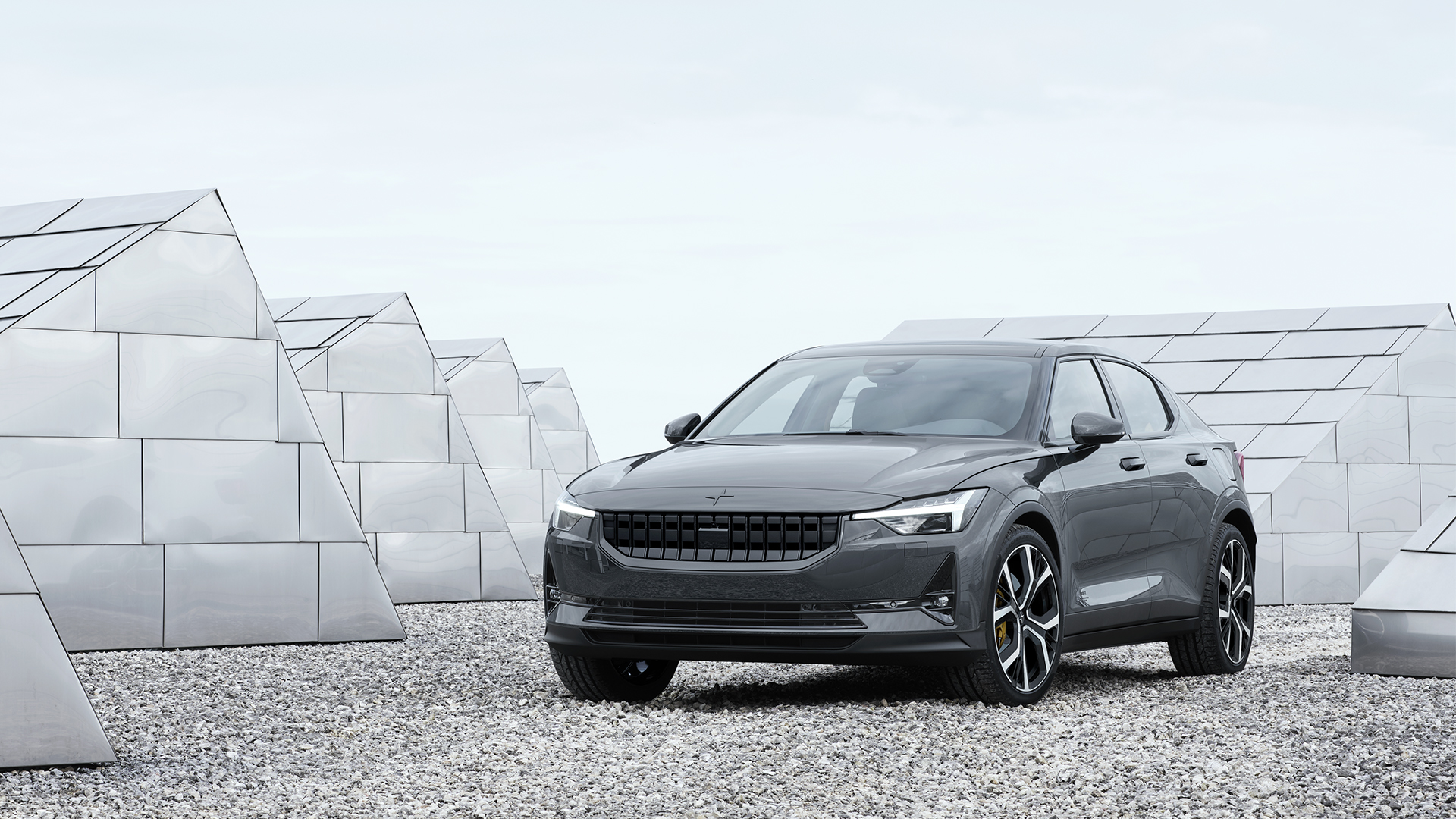

Year / Make / Model
2020 Polestar 2
The Topline News
After Polestar became Volvo’s premium electric brand, it pulled back the curtain on what’s behind this company’s first premium volume electric sedan. The Polestar 2 fits in the manufacturer’s lineup as the current bottom-rung entry, directly beneath the $155,000 Polestar 1. So does it have the technology and performance to go up against Jaguar, Audi, and Tesla? Let’s see.

What’s new in the Polestar 2?
Aside from being the first all-electric car offered by Volvo or its spin-off brand, the Polestar 2 introduces sharp European styling (from design chief Maximillian Missoni) and mainstream fundamentals into the premium electric sedan market segment. Built on the same Volvo Compact Modular Architecture as the XC40, the five-door fastback is equipped with a 78 kilowatt-hour battery, dual motors, and more torque than you can shake a stick at.
The Polestar 2’s eyebrow-raising specs into an output of 408 horsepower and 487 pound-feet of torque, delivered from its synchronous front and rear drive motors. It can zip from zero to 60 miles per hour in under five seconds.
Fortunately, EV tech is mature enough to be both fun and green. While Polestar’s 78 kWh battery pack may not seem like a whole lot of juice compared to other offerings on the market, the Chinese-owned company claims the Polestar 2 will be able to travel up to 310 miles (500 kilometers) on a single charge.
Takeaway Quote
“Polestar 2 is our first fully electric car and first volume model. Everything about it has been designed and engineered with passion and dedication,” said Thomas Ingenlath, Chief Executive Officer of Polestar. “As an electric performance brand, and through the forthcoming launch of a portfolio of fully electric cars, Polestar is determined to address the world’s air quality challenges. Polestar delivers electric performance cars that are great to own and drive.”

What Else You Need to Know
Polestar packed the 2 with technology. An always-connected approach was taken with the car so that services and features would heavily focus on the convenience of being always available and cell phone centric.
If the cabin looks a little too much like a traditional car, that’s because a recent study by Volvo showed this was very important to consumers. But there’s plenty of evidence of modernity featured in the vehicles dual displays—one in the traditional cluster and an 11-inch portrait-oriented center touch screen. The infotainment system operates on an embedded Android-based operating system, giving it access to a myriad of mobile tech, such as Google Assistant, Google maps, and even Google Play Store apps right on the center display in a usable tile-based user interface.
Like the Tesla Model 3, the Polestar 2 will have no key. Instead, a mobile phone will be used as the primary entry device. Four Bluetooth antennas live in each corner of the car for maximum coverage and pinpointing when a driver is near enough to be recognized as actively trying to enter the car; essentially mimicking passive entry without being susceptible to relay attacks.
Since there is no key, there will be no start button either. Polestar has instead embedded a sensor on the driver’s seat to tell when it’s time to drive. Once it recognizes the phone is nearby and a butt is in the seat, the Polestar will enter “ready to go” mode.
Even the headlights are smart. Its Pixel LED headlights can sense other drivers and intelligently cut the beam, even following cars as they pass in opposing traffic. During the 2’s unveiling, Ingenlath said that drivers can essentially travel with their high beams permanently on and not negatively affect those around them.

Interiors are completely vegan, meaning no high-end leathers. However, the materials chosen don’t appear to offer any compromise in its premium appearance. If purchasing the performance package, small tidbits of the interior, such as the seat belts, receive Polestar’s signature yellow touch, along with the vehicle’s suspension and brake calipers.
Pricing is competitive with that of the Model 3 Performance variant, coming in at a stout $68,100 (59,900 Euro) for the first year of the vehicle’s production. Once production ramps up, Polestar says that its non-introductory base-price will cost consumers $45,400 (39,900 EUR)—though that model won’t be available in the United States because of the new 27.5% tariff on Chinese passenger cars.
Polestar will bring the Polestar 2 with it to the 2019 Geneva International Motor Show in March and enter production in February 2020.









